A Quick History of Sid Meier's Civilization
With the release of Sid Meier’s Civilization VII, the iconic strategy game series enters its fourth decade, continuing to challenge players to build empires, manage societies, and shape history. Whether you’re a longtime fan or new to the franchise, understanding its evolution can help you appreciate just how far it has come.
This post is based on the script of my YouTube video.
Civilization (1991): The Birth of a Classic
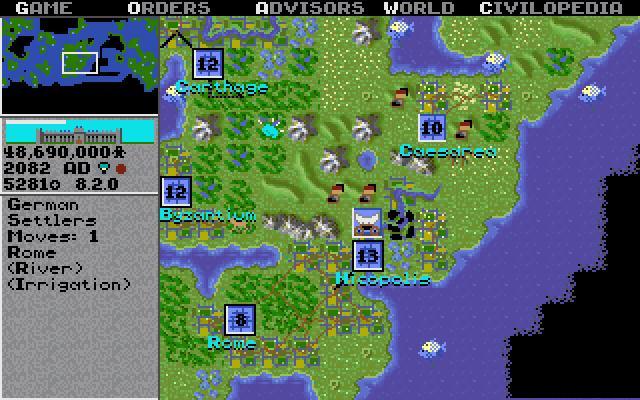
In 1991, Sid Meier’s Civilization changed strategy gaming forever. After the success of Sid Meier’s Railroad Tycoon, Meier and Bruce Shelley at MicroProse wanted to go bigger. Instead of just managing trade and transportation, what if players could guide an entire civilization from the dawn of history to the modern age?
Originally conceived as a real-time strategy game, Civilization evolved into a turn-based format that emphasized empire-building, diplomacy, and war. Players started with a single settler on an unexplored world, gradually expanding their empire by founding cities, researching technology, and engaging in conflict. Key features such as the tech tree, tile-based movement, city improvements, and the “fog of war” became staples of the franchise.
Critics praised Civilization as one of the most ambitious strategy games ever made. It won numerous awards, sold over a million copies, and was inducted into multiple gaming hall-of-fames. It laid the foundation for every Civilization game that followed.
A fun bit of trivia: Bruce Shelley later co-founded Ensemble Studios, the developers of Age of Empires. While Age of Empires isn’t a Civilization title, it shares some DNA with the franchise.
Sid Meier’s Colonization (1994): A Focused Spin-Off
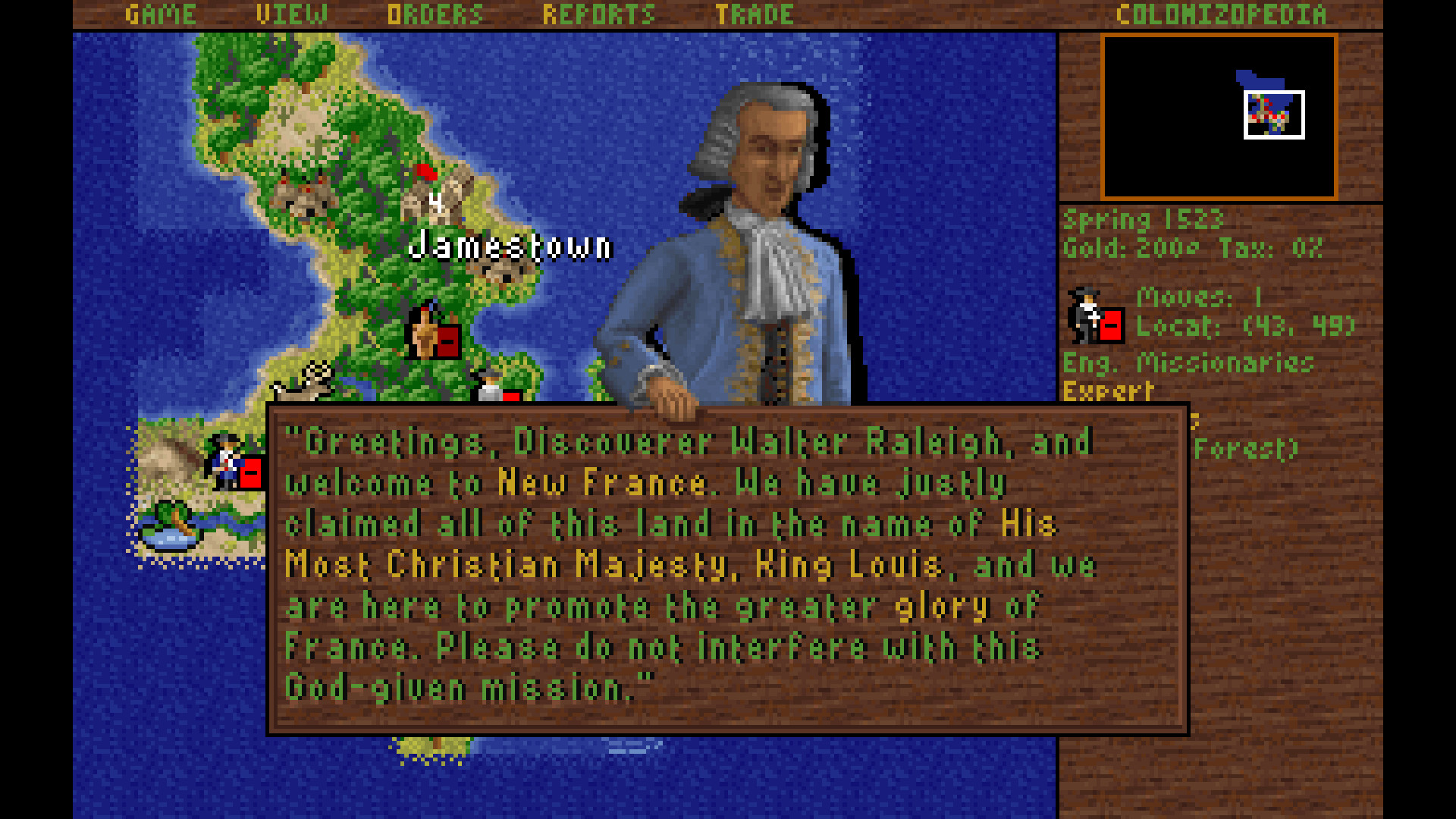
In 1994, Brian Reynolds led development on Sid Meier’s Colonization, a game that used the foundation of Civilization but narrowed its focus. Instead of spanning all human history, Colonization focused on the European colonization of the Americas.
The game introduced more complex trade systems and deeper diplomatic interactions. Players managed relations with Native American tribes and European powers while also preparing for an eventual war of independence. The goal was to establish a thriving colony and declare independence from your mother country.
Though not as commercially successful as Civilization, Colonization was still well received. It didn’t receive a direct sequel, but in 2008, Firaxis remade it using the Civilization IV engine.
Civilization II (1996): Refining the Formula
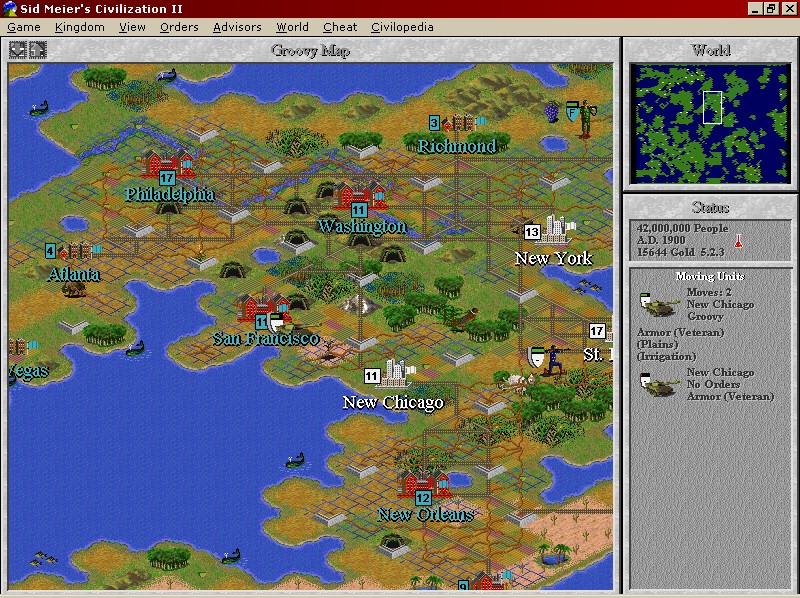
In 1996, Civilization II expanded and refined the ideas of the original game. Brian Reynolds took the lead on this sequel, which introduced a more detailed isometric 2D perspective, making maps more visually intuitive and attractive.
The game dramatically increased the depth of strategy, adding more civilizations, military units, and wonders. It introduced new mechanics such as production waste and pollution that could lead to global warming. The overall scale of the game increased as well, with players able to enjoy much larger maps with more civilizations present at once. Modding support was a focus too, and established modding as a core part of the franchise’s appeal.
Civilization II became a massive hit, selling over three million copies and winning numerous game-of-the-year awards.
Later, in 1999, MicroProse released Civilization II: Test of Time, an updated version with additional scenarios and sci-fi/fantasy settings. However, by then, Firaxis had moved on.
Sid Meier’s Alpha Centauri (1999): Civilization in Space
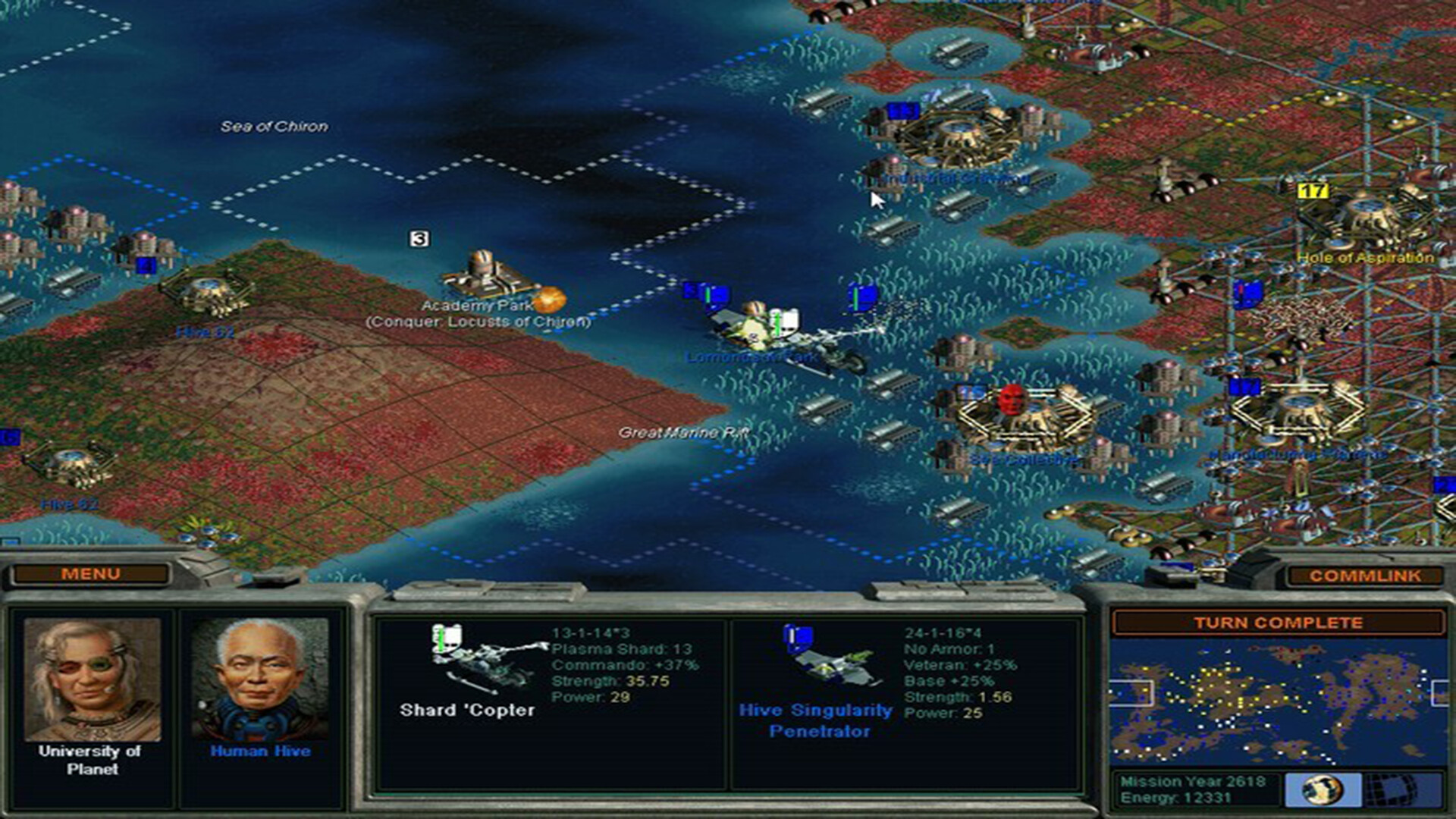
With Firaxis unable to immediately secure the rights to the Civilization name, Sid Meier, Brian Reynolds, and Jeff Briggs created Sid Meier’s Alpha Centauri, a spiritual successor set in the distant future.
Released in 1999, Alpha Centauri picked up where a Civilization II science victory left off. Instead of leading a historical civilization, players controlled factions of human colonists who had arrived on an alien planet.
The game expanded upon Civilization’s core mechanics with new features such as customizable units, deeper government and philosophy systems, and alien lifeforms that would more strongly oppose the players as they developed bases. It also had several new systems that didn’t catch on but are key to the game’s vibe, like customizable units and a more detailed map that players could terraform to meet their goals.
Critically, Alpha Centauri was widely praised and is still considered one of the greatest strategy games ever made. However, it did not sell as well as Civilization II, moving only a few hundred thousand copies. Alpha Centauri never got a sequel, but it did receive a major expansion, Alien Crossfire, that added two new alien factions and new victory conditions.
Civilization: Call to Power (1999): A Legal Battle and an Offshoot
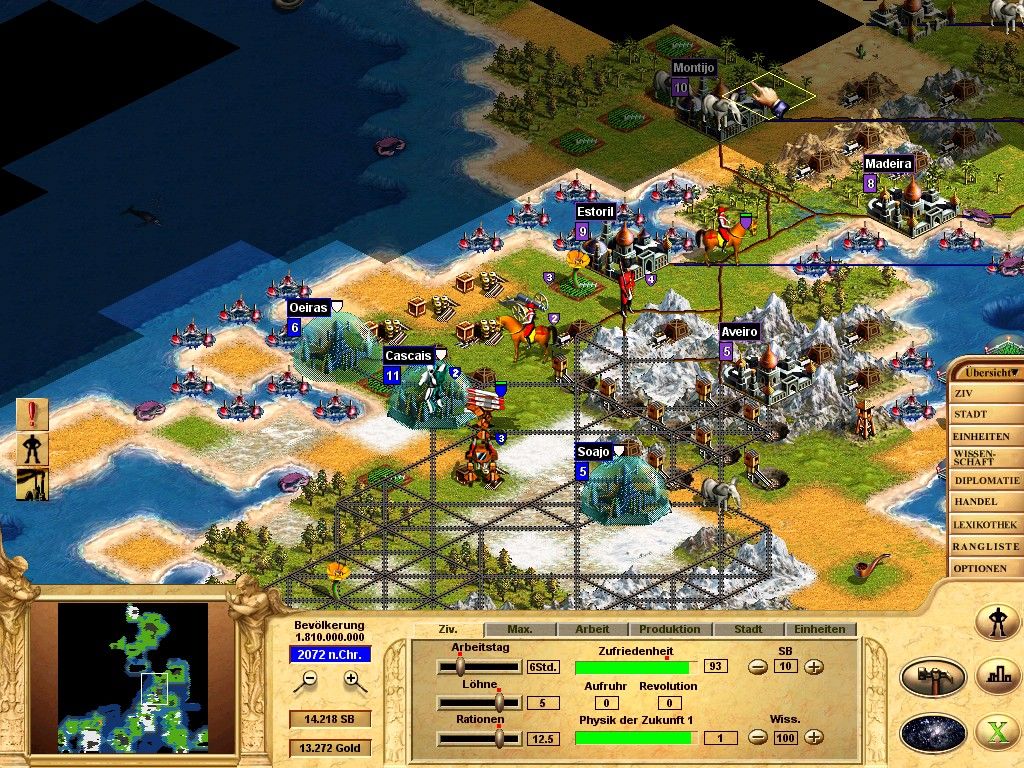
Around the same time, Activision attempted to create its own Civilization game with Civilization: Call to Power. It was not developed by Firaxis or Sid Meier but was instead a result of a legal loophole that allowed Activision to use the Civilization name.
The game expanded upon Civilization II by adding futuristic elements, such as space colonies and underwater cities. It also experimented with new systems, such as a stronger pollution mechanic and a happiness system that could lead to terrorism if mismanaged.
Despite these additions, Call to Power was not well received. A sequel, Call to Power II, was released in 2000 without the Civilization name due to legal disputes. With poor sales and a mixed reception, this offshoot of the franchise ended there.
Civilization III (2001): Introducing Culture
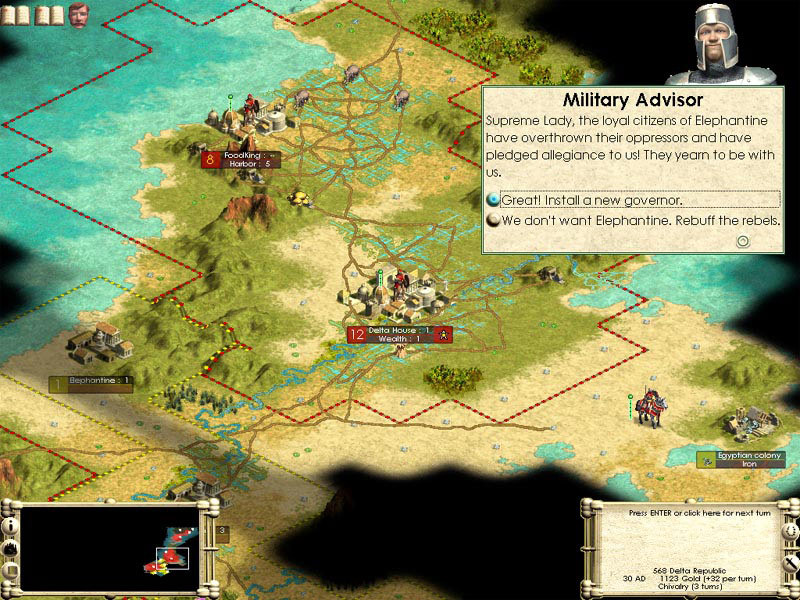
With Civilization III, released in 2001, Firaxis regained full control of the franchise and introduced one of the most transformative mechanics in the series: culture. This installment, designed by Jeff Briggs and Soren Johnson, built upon the foundation of Civilization II while implementing a fresh, modernized interface and a more stylized art direction.
Culture became a defining feature of Civilization III. Instead of only expanding borders through city placement, civilizations could now exert cultural influence over neighboring territory. If a city's culture was strong enough, it could even flip rival cities to its side, leading to new non-military conquest strategies. Additionally, luxury resources were introduced to help manage citizen happiness, adding more depth to trade and diplomacy.
Diplomatic interactions became more sophisticated, with players gaining access to long-term alliances, trade embargoes, and reputation-based negotiations. Governments also played a more pronounced role, with each type offering distinct advantages and penalties. Another significant change came with corruption and waste mechanics, which discouraged players from rapid, unchecked expansion by imposing penalties on distant cities. This forced players to carefully balance expansion and internal stability.
Despite its innovations, Civilization III was somewhat divisive among fans. While many praised its depth and polish, others found the corruption system too punishing and the AI frustrating to deal with. The two expansions, Play the World and Conquests, addressed some of these issues by introducing multiplayer support, new civilizations, and additional scenarios.
Though Civilization III may not have been as universally beloved as its predecessor, it laid the groundwork for many mechanics that would become staples in future Civilization titles.
Civilization IV (2005): Taking Civilization II’s Formula to Its Conclusion
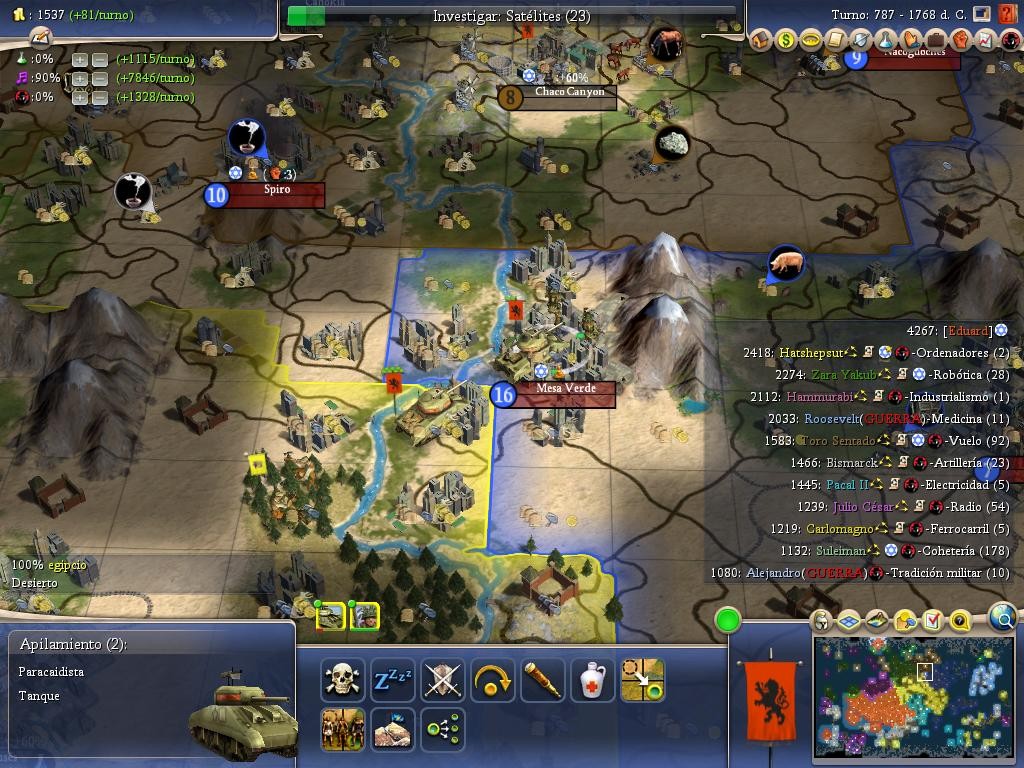
By 2005, Civilization IV arrived with a fully 3D engine, fundamentally changing how the game looked and played. This installment, led by Soren Johnson, embraced modern hardware capabilities to deliver a more immersive and detailed world. It also set the stage for some of the most influential mechanics in franchise history.
One of the biggest additions was religion. While civilizations in past games had various government types, Civilization IV introduced seven world religions, each of which could be founded by discovering specific technologies. Religion played a central role in diplomacy, trade, and cultural development, leading to unique interactions between civilizations. While there was no dedicated religious victory, choosing a dominant religion and spreading it throughout the world became a viable strategy.
Civ IV also changed how governments worked by replacing static government types with civics, which allowed players to mix and match policies to create custom governing systems. This added flexibility allowed civilizations to adapt their strategy over time instead of being locked into one government type.
Combat was overhauled with unit experience and promotions, rewarding players for keeping veteran units alive. Diplomacy was improved with clearer AI behavior, making interactions with other civilizations feel more consistent. Modding support was expanded, leading to the creation of total conversion mods like the fantasy-themed Fall from Heaven.
Beyond gameplay, Civilization IV was a landmark in presentation. The game featured Leonard Nimoy as the narrator, whose voice guided players through technology advancements. The title theme, "Baba Yetu," composed by Christopher Tin, became the first video game song to win a Grammy Award.
Civ IV was an instant classic, receiving near-universal acclaim and selling over three million copies. Two major expansions, Warlords and Beyond the Sword, expanded gameplay even further by adding great generals, corporations, espionage, and new late-game scenarios. For many fans, Civilization IV remains one of the finest entries in the franchise, offering a perfect blend of strategic depth, presentation, and replayability.
Civilization Revolution (2008): Bringing Civ to Consoles
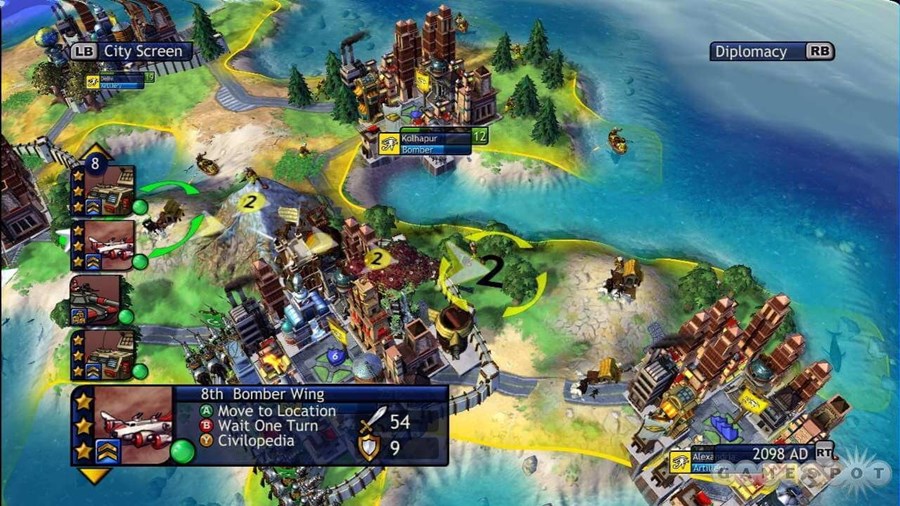
With Civilization Revolution, Sid Meier set out to make the series more accessible to console players. The game streamlined many mechanics, reducing the complexity of city management, diplomacy, and unit movement.
The result was a quicker title that captured the essence of Civilization but allowed players to finish a full game in a few hours. While long-time fans didn’t much care for this entry in the franchise, there were exceptions, like veteran game critic Tom Chick.
Following the release of Civilization Revolution in 2008, Firaxis decided to develop a sequel designed specifically for mobile devices. Civilization Revolution 2 streamlined many of the mechanics from the original, making the game even more accessible to casual players.
Unfortunately, the game did not receive the same level of attention or polish as other entries in the franchise. It lacked multiplayer at launch and had fewer gameplay improvements than fans expected. Released on iOS and later Android and PlayStation Vita, it never gained the same following as its predecessor.
Civilization V (2010): Reinventing the Map
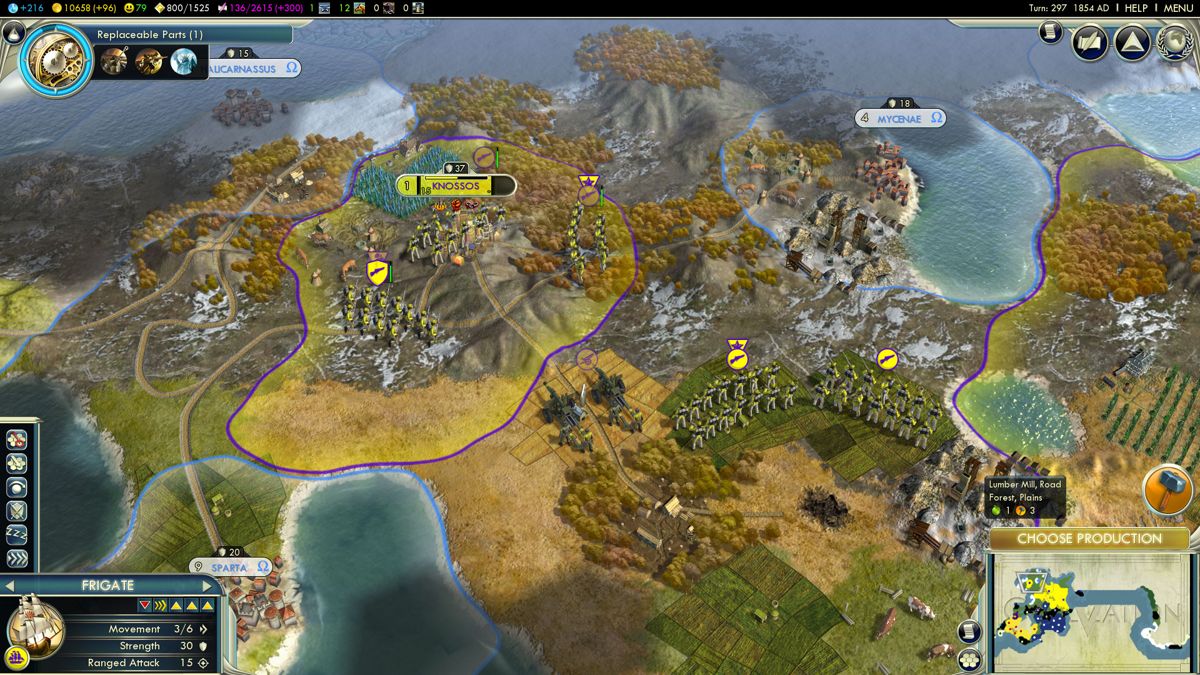
By 2010, Civilization had become one of the most well-respected franchises in gaming. When Firaxis launched Civilization V, led by Jon Shafer, it introduced some of the most dramatic changes in the series’ history.
The most significant innovation was the switch from square tiles to a hex-based grid. This change fundamentally altered movement and combat, making positioning more important than ever. Civilization V also introduced a one-unit-per-tile rule, removing the ability to stack military units on top of one another. This eliminated the infamous “stack of doom” strategy from previous games, making battles more tactical.
Another major shift was the removal of technology trading between civilizations, a mechanic that had previously allowed players to rapidly accelerate research. Instead, Firaxis introduced research agreements, which required civilizations to form alliances and invest in shared scientific progress. City-states were also introduced for the first time, giving players new diplomatic and military options.
The game was released to critical acclaim, but many longtime players found the base version lacking in depth. Religion and espionage, two staple mechanics from Civilization IV, were absent at launch. However, these elements were reintroduced in the game’s two expansions: Gods & Kings (2012), which brought back religion and expanded diplomacy, and Brave New World (2013), which overhauled trade, culture, and introduced the World Congress for diplomatic victories.
Despite initial skepticism, Civilization V became one of the most successful entries in the series. It was heavily supported by modders and DLC packs, eventually featuring 43 playable civilizations. Today, it remains one of the most played strategy games on Steam.
Sid Meier’s Civilization: Beyond Earth (2014): A Misstep in Space
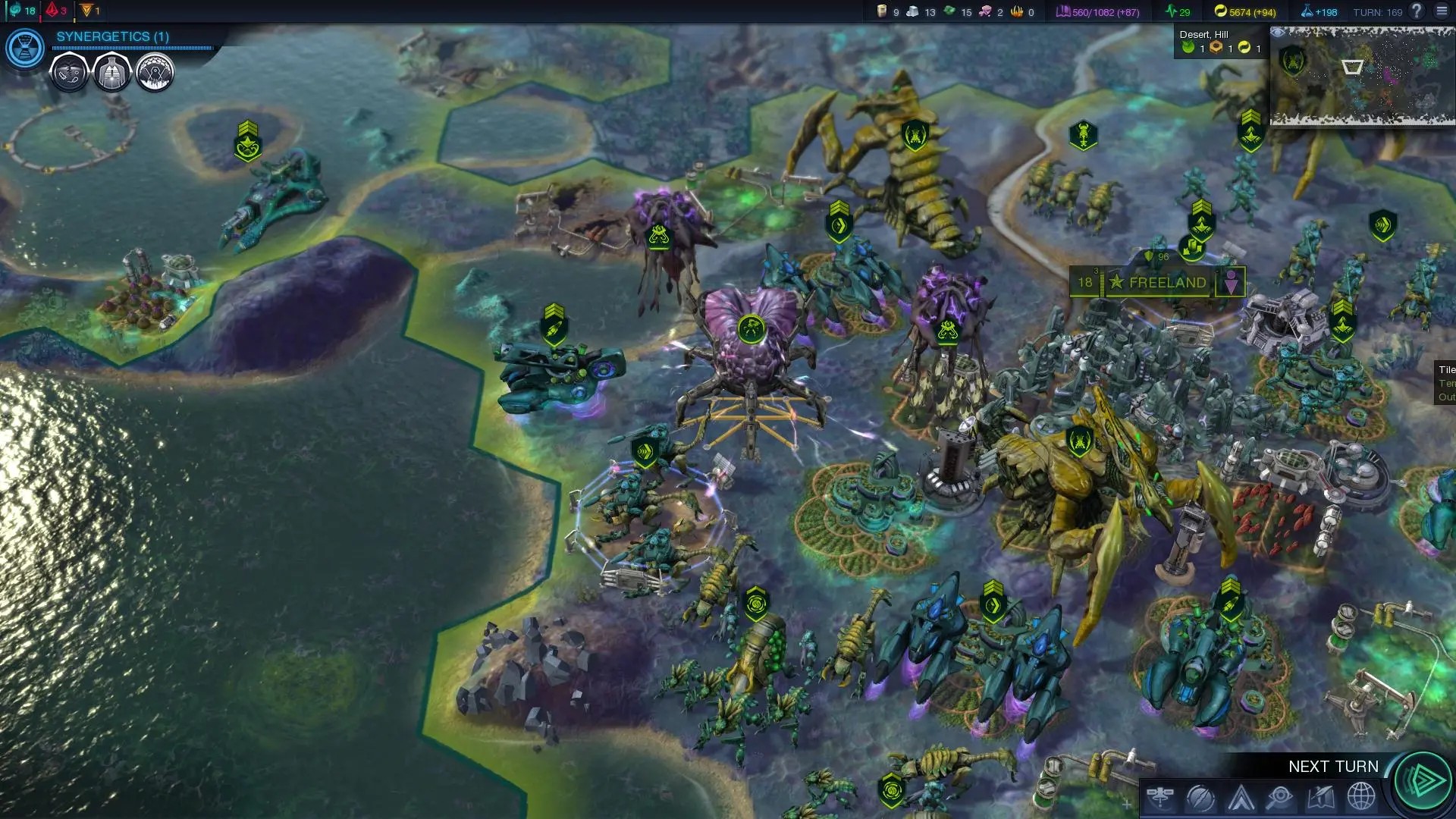
Following the success of Civilization V, Firaxis attempted to return to a sci-fi setting with Sid Meier’s Civilization: Beyond Earth. Designed by David McDonough and Will Miller, the game sought to capture the magic of Alpha Centauri while using the Civilization V engine as its foundation.
Rather than controlling historical civilizations, players led one of several human factions as they settled an alien world. The game introduced the Affinity system, which allowed players to shape their society into one of three ideologies: Purity (preserving human culture), Harmony (adapting to the alien world), or Supremacy (embracing cybernetic enhancements).
A key innovation was the radial tech tree, which gave players more freedom in their technological progression. However, many players felt that Beyond Earth lacked the personality and narrative depth of Alpha Centauri. The diplomacy system was criticized for being too shallow, and the AI was often too passive.
Firaxis attempted to improve the game with the Rising Tide expansion in 2015, which added ocean cities and improved diplomacy. While it made Beyond Earth more engaging, the game never reached the same level of popularity as the main Civilization entries.
Civilization VI (2016): Making Civilization a city-builder
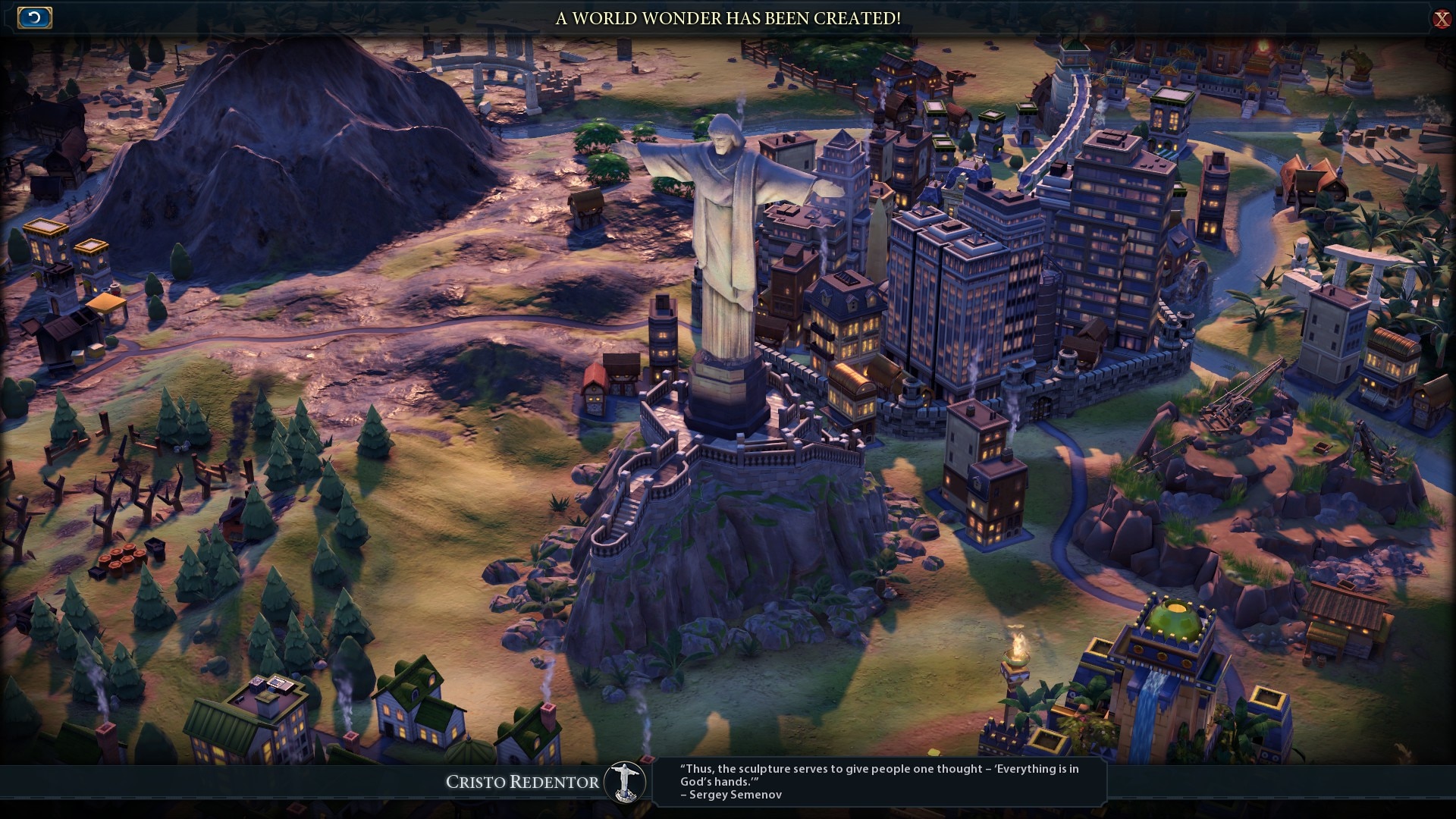
With Civilization VI, Firaxis veteran Ed Beach took the lead as lead designer. Released in 2016, this installment focused on refining the series’ core mechanics while introducing one of the most innovative changes in franchise history: the city districts system.
Unlike previous games, where all city buildings were constructed within a single tile, Civilization VI spread cities across the map by requiring players to construct specialty districts. For example, a Campus district improved science output, while an Industrial Zone boosted production. District placement became a critical strategic element, as adjacency bonuses determined a city’s effectiveness.
Civ VI also expanded on unique civilization abilities, with each civilization now having its own exclusive mechanics. For instance, Norway could launch naval raids without embarking technology, and Rome automatically built roads between cities. Some civilizations, like Greece, even had multiple leaders, each with different playstyles.
Diplomacy and AI behavior were also overhauled. AI leaders now had agendas, meaning they had specific behaviors that influenced their relationships with the player. However, these mechanics were sometimes unpredictable, with AI civilizations making seemingly erratic decisions.
While Civilization VI received positive reviews, many players found its initial launch lacking in key mechanics. The expansions Rise and Fall (2018) and Gathering Storm (2019) helped flesh out the game. Rise and Fall introduced the Loyalty system, Golden and Dark Ages, and improved alliances. Gathering Storm added environmental mechanics, including natural disasters and climate change, making long-term planning even more important.
Despite a somewhat mixed reception at launch, Civilization VI has since become one of the most-played games in the series, especially with its strong console ports and a well-received iOS version.
Civilization VII (2025): What’s Next?
With Civilization VII, Firaxis aims to address long-standing concerns about late-game pacing. The introduction of mid-game civilization swapping is set to revolutionize the experience, ensuring every playthrough remains fresh.
Final Thoughts
The Civilization franchise has continually evolved while staying true to its core concept: leading a civilization from the dawn of time to the modern era. With each new entry, Firaxis refines the formula, proving that Civilization is more than just a game—it’s a legacy.
